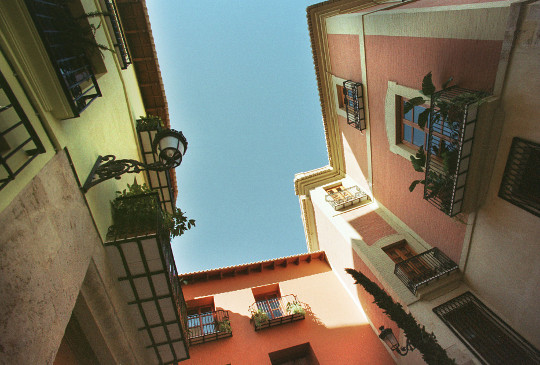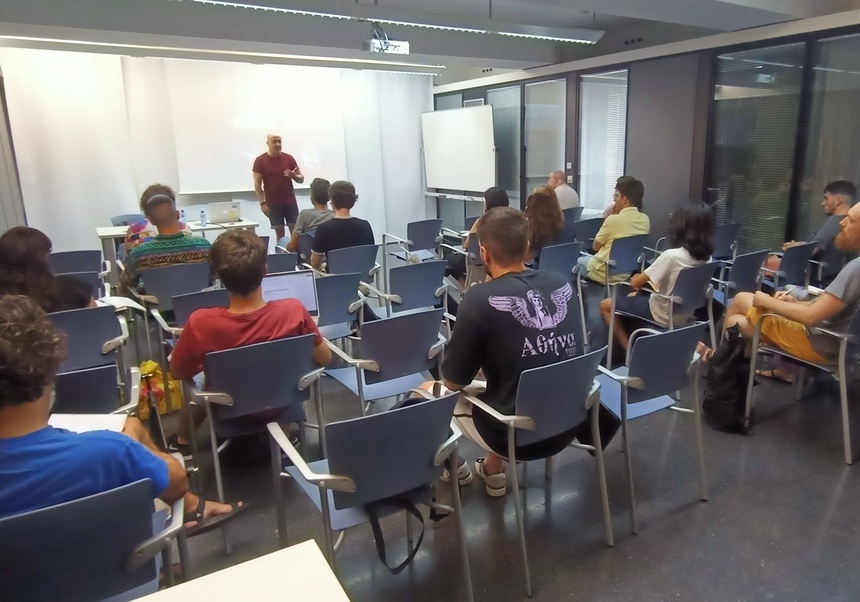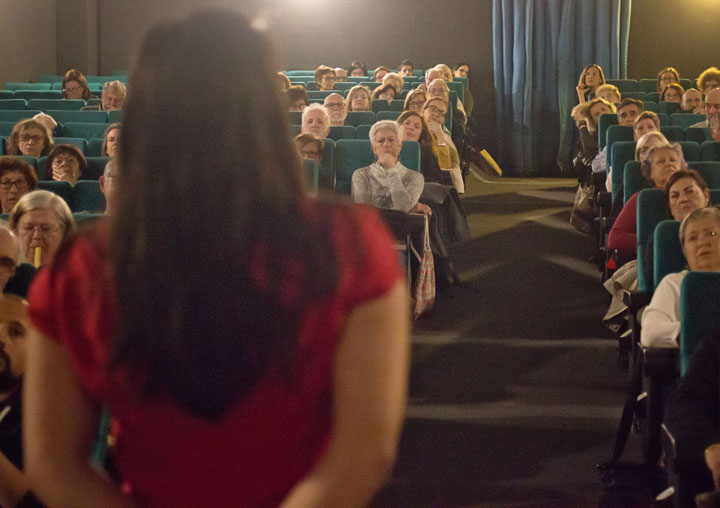The Cinema Club of the Universitat de València resumes its free annual scheduling
- Office of the Vice-Principal for Culture and Society
- October 2nd, 2017

After the summer break, the Cinema Club of the Universitat de València offers for another year its scheduling. The year starts at the residence hall CM Rector Peset with a cycle that celebrates the 50th anniversary of the Festival de Sitges and with another one about the climate change threat at the palace Palau de Cerveró. Sessions, as usual, will be open and free. The films will be projected in subtitled original version and preceded by a little presentation. Then they will be discussed on the following colloquium.
Sitges cycle: 50 years of terror
At the end of the 60's, at the time of the inauguration of the late Francoism and the rise of Spain as a holiday destination for the wealthy Europeans, the town of Sitges held a week of Films, Photography and Audiovisual whose main objective was to serve as a tourist attraction of this city of the coast of Barcelona. This event would be the germ of what the next year (1968) would be the first edition of the now world-renowned Festival de Sitges, which has been held uninterruptedly for half a century. It was first understood as a sample of the best fantasy and horror films. However, in recent years, Sitges has opened up to other proposals as far as representation of other genres is concerned, thus forming a more attractive and open range of genres which can satisfy all types of public.
The cycle is opened next Tuesday 3rd October with the showing of ‘The Fearless Vampire Killers’ (Roman Polanski, 1967). This film was already in the first annual of the film festival Festival de Sitges in 1968 and it implies a curious launch of Polanski in the fantastic genre, but always with a good dose of humour and surrealism. Next showing will be Tuesday 17th October with the film ‘Donnie Darko’ (Richard Kelly, 2001). This is a cult film of the ‘cursed’ director’ Richard Kelly, which talks not only about the difficult passage from adolescence to maturity but also about the paranoia and alienation of the contemporary youth. Then, Tuesday 24th October it will be shown ‘Russian Ark’ (Aleksandr Sokurov, 2002). The film, in spite of not being a fantastic one, was received with great interest in Sitges. It was more of a personal and metaphoric review of the Russian history from the 18th century and its technical expertise is one of the most outstanding features, since it was recorded only in one long shot. Finally, Tuesday 31th October the cycle comes to an end with the film ‘Bram Stoker’s Dracula’ (Francis Ford Coppola, 1992). It shows a romantic and terrifying point of view of the classic character of Dracula. The work of one of the greatest directors ever is the main element of the poster which celebrates the 50th anniversary of the Festival de Sitges.
Cycle ‘Ultimatum al planeta’
The 24th October will take place the International Day Against Climate Change, a chance to insist on the need of raising awareness of the problem of the global warming in the global population.
The scheduling will start Thursday 5th October with the documentary ‘An Inconvenient Truth’ (Davis Guggenheim, 2006), whose main protagonist is the former American vice president Al Gore. This documentary has warn for more than a decade about the risks and consequences of the global warming, especially about the treat of the ecological balance and the extinction of several important ecosystems. Next Thursday 19th October it will be shown ‘Snowpiercer’ (Bong Joon-Ho, 2013), a film that uses the thriller and the post-apocalyptical action films clichés in order to show how it would be a world always immersed in snow and ice. The cycle will end the following Thursday 26th October with ‘The Day After Tomorrow’ (Roland Emmerich, 2004). This film uses the disaster film genre to warn in an exaggerated and not very scientific way and to send out a message about the devastating consequences of the climate change.
More information:
More information:
File in: Aula de Cinema
















